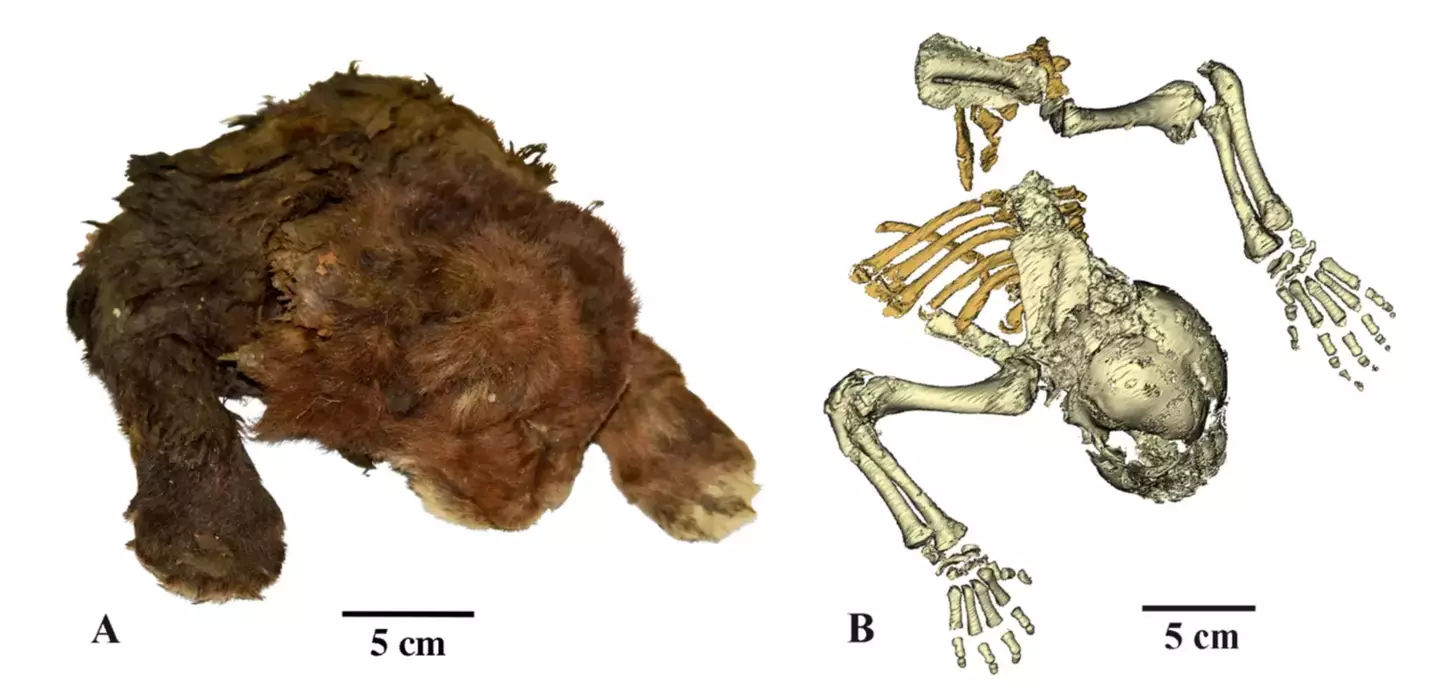
It’s the first time in history that scientists have been able to recover mummified remains from the ancient species.
The juvenile body of the saber-toothed cat was frozen underneath Arctic permafrost in Siberia.

Researchers uncovered a well-preserved saber-toothed cub (A V Lopatin/Scientific Reports, 2024)
This discovery is an exciting find as it marks the first time that a mummified body of the species has ever been found.
It’s in incredible condition, with fur, torso, head and limbs all still intact.
A research team from the Russian Academy of Sciences wrote a report which was published in the Scientific Reports.
It read: “For the first time in the history of paleontology, the appearance of an extinct mammal that has no analogues in the modern fauna has been studied.”
It was reported that the cat was still in its kitten stage and was just three-weeks old when it died.
This is why it is devoid of the characteristic saber tooth canines as it didn’t have time to develop them.
While a lot of people in the field have wondered what a saber-toothed cat really looked like, the kitten shows its features in startling detail.

The mummified cat is 35,000 years old (A V Lopatin/Scientific Reports, 2024)
Now, this will prove to be essential in understanding the species.
The study authors revealed the juvenile saber-toothed cat has ‘significant differences from a modern lion cub of similar age.’
Compared to a three-week old lion cub, this saber-toothed cat features an ‘unusual’ shaped muzzle, small ears, long forelimbs, a large mouth opening, a darker coat and a larger neck area.
However, researchers deduced that this was down to living in a cold climate.
The authors wrote: “The discovery of H. latidens mummy in Yakutia radically expands the understanding of distribution of the genus and confirms its presence in the Late Pleistocene of Asia.”
The kitten specifically comes from the H. latidens, the Eurasian type which lived right up until the Ice Age began to end.
All of the species held different characteristics depending on the region they resided in.
While this isn’t the only species to be discovered in permafrost in Siberia, it is certainly a notable case.
There was one instance where a wolf was also found in great condition, as have wooly rhinoceros, mammoths and birds.

